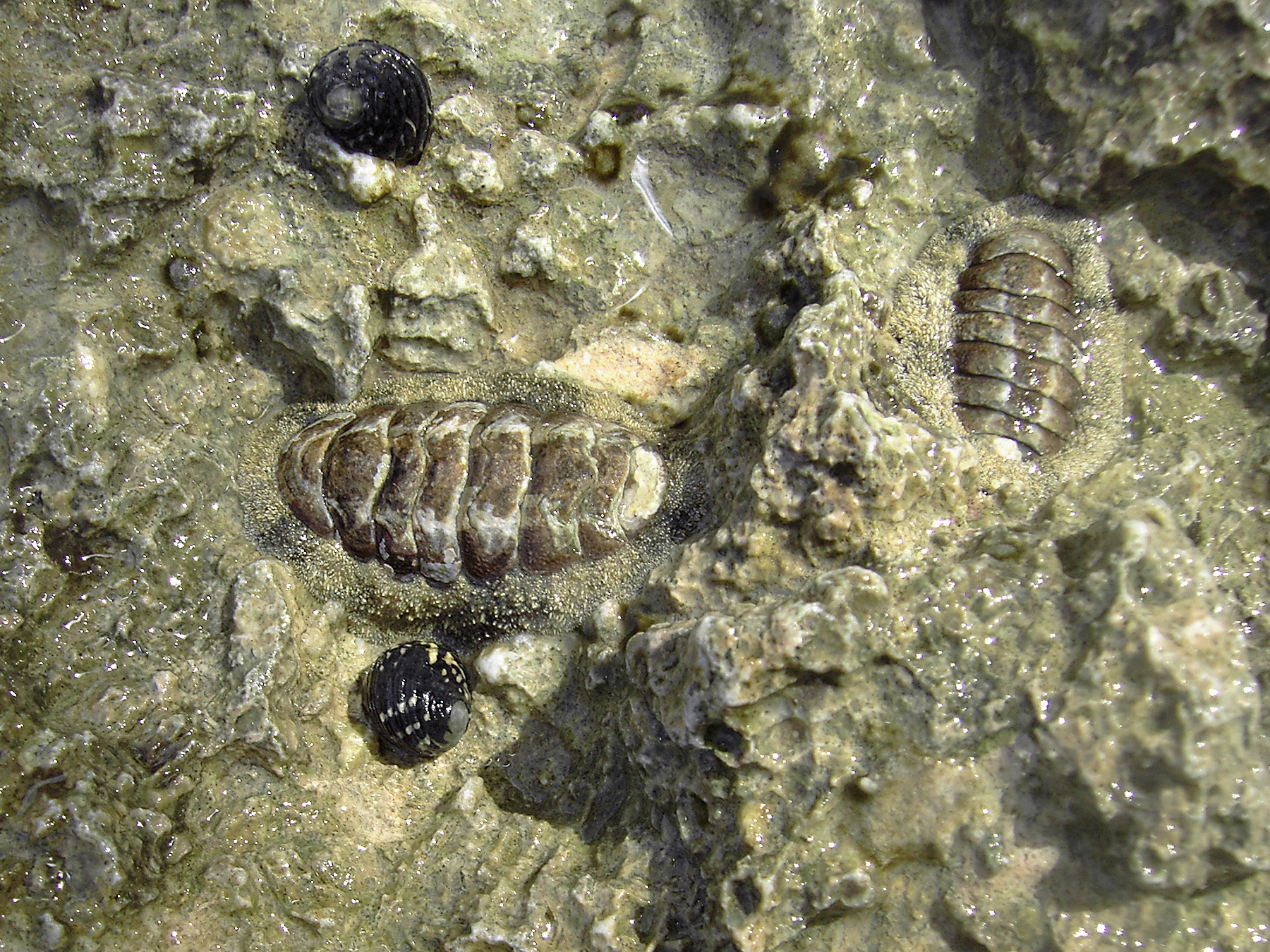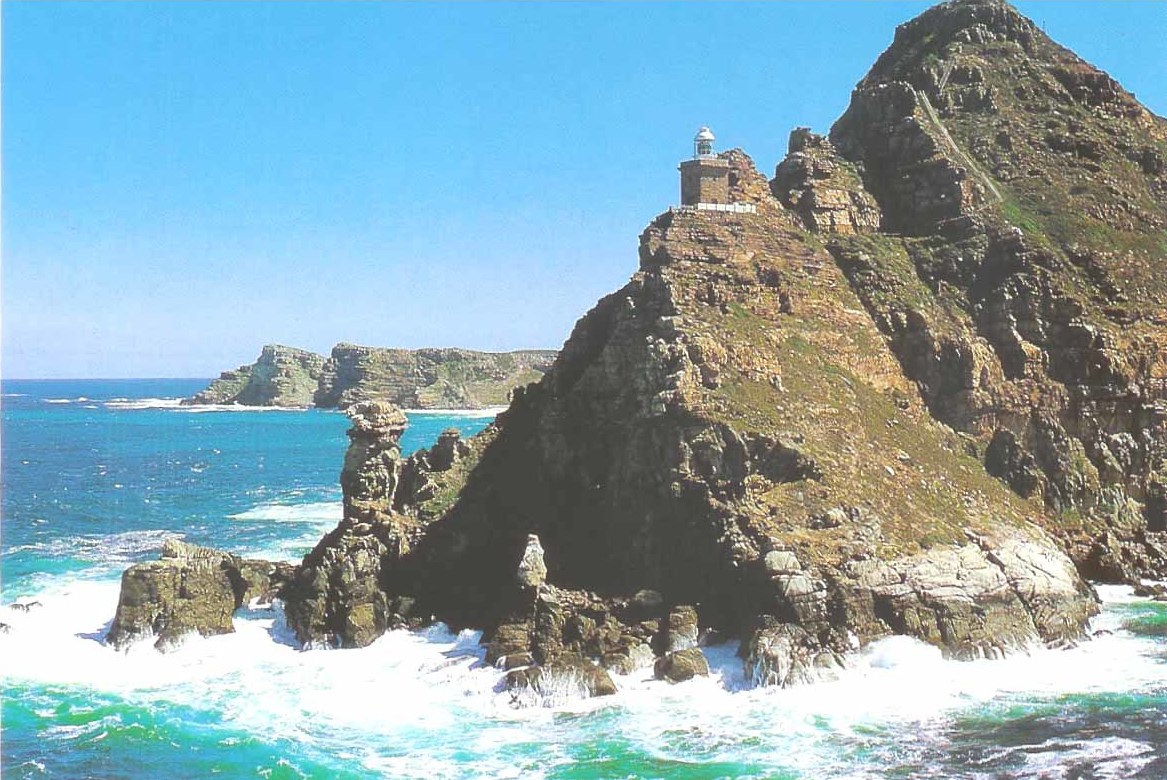|
Ischnochiton Bergoti
''Ischnochiton bergoti'', the ribbed-scale chiton, is a small polyplacophoran mollusc in the family Ischnochitonidae, endemic to the west coast of southern Africa. Description The species has somewhat drab colouring and is usually off-white to brown. Valves are finely pitted and may bear subtle radiating ridges. The scales of the girdle each bear between 3 and 8 coarse radiating ribs, visible under the microscope. Average body length is 10–20 mm. Distribution and habitat ''Ischnochiton bergoti'' occurs along the west coast of southern Africa, in cold Atlantic coastal waters from southern Namibia to Cape Point in South Africa, where it can be found under stones below the high tide mark. Ecology Like some other species of chiton Chitons () are marine molluscs of varying size in the class Polyplacophora ( ), formerly known as Amphineura. About 940 extant and 430 fossil species are recognized. They are also sometimes known as sea cradles or coat-of-mail shells or suc ... [...More Info...] [...Related Items...] OR: [Wikipedia] [Google] [Baidu] |
Chiton
Chitons () are marine molluscs of varying size in the class Polyplacophora ( ), formerly known as Amphineura. About 940 extant and 430 fossil species are recognized. They are also sometimes known as sea cradles or coat-of-mail shells or suck-rocks, or more formally as loricates, polyplacophorans, and occasionally as polyplacophores. Chitons have a shell composed of eight separate shell plates or valves. These plates overlap slightly at the front and back edges, and yet articulate well with one another. Because of this, the shell provides protection at the same time as permitting the chiton to flex upward when needed for locomotion over uneven surfaces, and even allows the animal to curl up into a ball when dislodged from rocks. The shell plates are encircled by a skirt known as a girdle. Habitat Chitons live worldwide, from cold waters through to the tropics. They live on hard surfaces, such as on or under rocks, or in rock crevices. Some species live quite high in the i ... [...More Info...] [...Related Items...] OR: [Wikipedia] [Google] [Baidu] |
Mollusc
Mollusca is a phylum of protostome, protostomic invertebrate animals, whose members are known as molluscs or mollusks (). Around 76,000 extant taxon, extant species of molluscs are recognized, making it the second-largest animal phylum after Arthropoda. The number of additional fossil species is estimated between 60,000 and 100,000, and the proportion of undescribed species is very high. Many taxa remain poorly studied. Molluscs are the largest marine biology, marine phylum, comprising about 23% of all the named marine organisms. They are highly diverse, not just in size and anatomical structure, but also in behaviour and habitat, as numerous groups are freshwater mollusc, freshwater and even terrestrial molluscs, terrestrial species. The phylum is typically divided into 7 or 8 taxonomy (biology), taxonomic class (biology), classes, of which two are entirely extinct. Cephalopod molluscs, such as squid, cuttlefish, and octopuses, are among the most neurobiology, neurologi ... [...More Info...] [...Related Items...] OR: [Wikipedia] [Google] [Baidu] |
Family (biology)
Family (, : ) is one of the eight major hierarchical taxonomic ranks in Linnaean taxonomy. It is classified between order and genus. A family may be divided into subfamilies, which are intermediate ranks between the ranks of family and genus. The official family names are Latin in origin; however, popular names are often used: for example, walnut trees and hickory trees belong to the family Juglandaceae, but that family is commonly referred to as the "walnut family". The delineation of what constitutes a family—or whether a described family should be acknowledged—is established and decided upon by active taxonomists. There are not strict regulations for outlining or acknowledging a family, yet in the realm of plants, these classifications often rely on both the vegetative and reproductive characteristics of plant species. Taxonomists frequently hold varying perspectives on these descriptions, leading to a lack of widespread consensus within the scientific community ... [...More Info...] [...Related Items...] OR: [Wikipedia] [Google] [Baidu] |
Ischnochitonidae
Ischnochitonidae is a family of chiton, polyplacophoran mollusc belonging to the superfamily Chitonoidea. MolluscaBase eds. (2022). MolluscaBase. Ischnochitonidae Dall, 1889. Accessed through: World Register of Marine Species at: https://www.marinespecies.org/aphia.php?p=taxdetails&id=69 on 2022-06-22 Subfamilies and genera * ''Ischnochitoninae'' Dall, 1889 ** ''Callistochiton'' Dall, 1879: belongs to the family Callistoplacidae ** ''Simplischnochiton'' Van Belle, 1974: synonym of Ischnochiton Gray, 1847 ** ''Lepidozona'' Pilsbry, 1892 ** ''Radsiella'' Pilsbry, 1892 ** ''Stenochiton'' H. Adams & Angas, 1864 ** ''Stenoplax'' Dall, 1879 ** ''Stenosemus'' Middendorff, 1847 ** ''Subterenochiton'' Iredale & Hull, 1924 **''Thermochiton'' Saito & Okutani, 1990 ** ''Tonicina'' Thiele, 1906 ** ''Tripoplax'' S. S. Berry, 1919 * Callistoplacinae Pilsbry, 1893raised to family level Callistoplacidae Pilsbry, 1893 * ''Callochitoninae'': raised to family levelCallochitonidae Plate, 1901 * ''Lep ... [...More Info...] [...Related Items...] OR: [Wikipedia] [Google] [Baidu] |
Valve (mollusc)
A valve is each articulating part of the shell of a Mollusca, mollusc or another multi-shelled animal such as Brachiopod, brachiopods and some Crustacean, crustaceans. Each part is known as a valve or in the case of Chiton, chitons, a "plate". Members of two Class (biology), classes of molluscs, the Bivalvia (clams) and the Polyplacophora (chitons), have valves. Species within one family of very unusual small sea snails, marine (ocean), marine opisthobranch gastropods in the family Juliidae, also have two articulating shells or valves, which resemble those of a bivalve. This exceptional family is commonly known as the bivalved gastropods. Gastropods in general are sometimes called "univalves", because in those that have a shell, the shell is usually in one part. Chitons The valves of chitons are eight dorsum (biology), dorsal, wiktionary:articulated, articulated shell plates, which are frequently coloured and sculpted. After death the girdle that holds the plates together disin ... [...More Info...] [...Related Items...] OR: [Wikipedia] [Google] [Baidu] |
Girdle (chiton)
A girdle is part of the anatomy of a chiton, one class of marine mollusk Mollusca is a phylum of protostomic invertebrate animals, whose members are known as molluscs or mollusks (). Around 76,000 extant species of molluscs are recognized, making it the second-largest animal phylum after Arthropoda. The ...s, the class Polyplacophora. Characteristics The shell of a chiton consists of eight valves which articulate with one another. The girdle is a strong but flexible structure that in most cases encircles the plates, holding them all together. Details of the external surface of the girdle are often useful in identifying the taxonomic family, genus and species of chiton. For example, the girdle may be covered in overlapping scales, spikes, or it may have tufts of glassy bristles protruding from it. In a few genera of chitons, the girdle covers the valves either partially, as in the Black Katy chiton, or completely, as with the gumboot chiton. Reference ... [...More Info...] [...Related Items...] OR: [Wikipedia] [Google] [Baidu] |
Namibia
Namibia, officially the Republic of Namibia, is a country on the west coast of Southern Africa. Its borders include the Atlantic Ocean to the west, Angola and Zambia to the north, Botswana to the east and South Africa to the south; in the northeast, approximating a quadripoint, Zimbabwe lies less than 200 metres (660 feet) away along the Zambezi, Zambezi River near Kazungula, Zambia. Namibia's capital and largest city is Windhoek. Namibia is the driest country in sub-Saharan Africa, and has been inhabited since prehistoric times by the Khoekhoe, Khoi, San people, San, Damara people, Damara and Nama people. Around the 14th century, immigration, immigrating Bantu peoples arrived as part of the Bantu expansion. From 1600 the Ovambo people#History, Ovambo formed kingdoms, such as Ondonga and Oukwanyama. In 1884, the German Empire established rule over most of the territory, forming a colony known as German South West Africa. Between 1904 and 1908, German troops waged a punitive ... [...More Info...] [...Related Items...] OR: [Wikipedia] [Google] [Baidu] |
Cape Point
Cape Point () is a promontory at the southeast corner of the Cape Peninsula, a mountainous and scenic landform that runs north-south for about thirty kilometres at the extreme southwestern tip of the African continent in South Africa. Table Mountain and the city of Cape Town are close to the northern extremity of the same peninsula. The cape is located at , about 2.3 kilometres (1.4 mi) east and a little north of the Cape of Good Hope on the southwest corner. Although these two rocky capes are very well known, neither cape is actually the southernmost point of the mainland of Africa; that is Cape Agulhas, approximately to the east-southeast. Peaks The peak above Cape Point is higher than that above the Cape of Good Hope. The rugged sandstone ( Table Mountain sandstone) ridge that rises from Cape Point at sea level develops into two peaks. There is a major peak that dominates the skyline locally, but there is also a smaller peak about 100 m (328 ft) furth ... [...More Info...] [...Related Items...] OR: [Wikipedia] [Google] [Baidu] |
South Africa
South Africa, officially the Republic of South Africa (RSA), is the Southern Africa, southernmost country in Africa. Its Provinces of South Africa, nine provinces are bounded to the south by of coastline that stretches along the Atlantic Ocean, South Atlantic and Indian Ocean; to the north by the neighbouring countries of Namibia, Botswana, and Zimbabwe; to the east and northeast by Mozambique and Eswatini; and it encloses Lesotho. Covering an area of , the country has Demographics of South Africa, a population of over 64 million people. Pretoria is the administrative capital, while Cape Town, as the seat of Parliament of South Africa, Parliament, is the legislative capital, and Bloemfontein is regarded as the judicial capital. The largest, most populous city is Johannesburg, followed by Cape Town and Durban. Cradle of Humankind, Archaeological findings suggest that various hominid species existed in South Africa about 2.5 million years ago, and modern humans inhabited the ... [...More Info...] [...Related Items...] OR: [Wikipedia] [Google] [Baidu] |
Marine Molluscs Of Southern Africa
Marine is an adjective meaning of or pertaining to the sea or ocean. Marine or marines may refer to: Ocean * Maritime (other) * Marine art * Marine biology * Marine current power * Marine debris * Marine energy * Marine habitats * Marine life * Marine pollution Military * Marines, a naval-based infantry force ** United States Marine Corps ** Royal Marines of the UK ** Brazilian Marine Corps ** Spanish Marine Infantry ** Fusiliers marins (France) ** Indonesian Marine Corps ** Republic of China Marine Corps ** Republic of Korea Marine Corps ** Royal Thai Marine Corps *"Marine" also means "navy" in several languages: ** Austro-Hungarian Navy () ** Belgian Navy (, , ) ** Royal Canadian Navy () *** Provincial Marine (1796–1910), a predecessor to the Royal Canadian Navy ** Navy of the Democratic Republic of the Congo () ** Royal Danish Navy () ** Finnish Navy (, ) ** French Navy () ** Gabonese Navy () ** German Navy () ** Royal Moroccan Navy () ** Royal Netherlands Navy ... [...More Info...] [...Related Items...] OR: [Wikipedia] [Google] [Baidu] |





